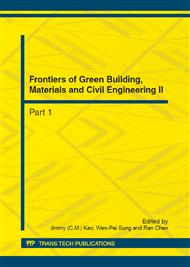p.1052
p.1056
p.1061
p.1065
p.1069
p.1075
p.1079
p.1086
p.1090
Impact Analysis of the Thickness of Wall Insulation on Indoor Comfort in Hot Summer and Cold Winter Area
Abstract:
With the continuous development of building energy efficiency, Wall insulation technology has become a new energy-saving technology. This paper mainly to a residential building model as an example in hot summer and cold winter zone (as in hefei). The ECOTECT simulation software was used to analysis the indoor uncomfortable period in different thickness of the exterior insulation layer. The Indoor uncomfortable period include too hot indoor discomfort period, too cold indoor uncomfortable period and total (obtain too hot and too cold) indoor discomfort period. According to the simulation result to analysis the relation between insulation layer thickness and the three kinds of indoor uncomfortable period. We can draw the total (obtain too hot and too cold) indoor uncomfortable period was not lowering with the increase of the insulation layer thickness, so we can choose the thickness of insulation layer, according to the influence of the thickness of insulation layer to the uncomfortable period, then providing certain reference for selection the thickness of insulation layer of energy conservation of the building wall.
Info:
Periodical:
Pages:
1069-1074
Citation:
Online since:
August 2012
Authors:
Price:
Сopyright:
© 2012 Trans Tech Publications Ltd. All Rights Reserved
Share:
Citation:


